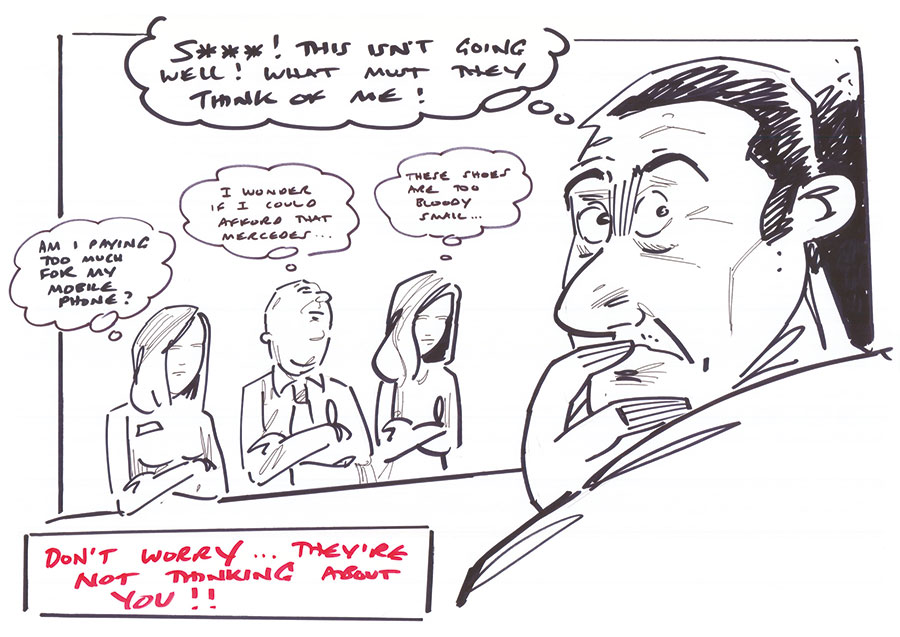The word presentation can strike fear into the bravest among us. It has become received wisdom that giving a presentation can be a career defining (or limiting) opportunity. The weight of expectation is heavy.

Managers who are looking to grow their people send them to presentation skills training, where many people have the scariest experience of their lives. Video and ‘constructive feedback’ is used to bully them into hiding behind transmitting powerpoint slides full of words rather than having conversations, and they learn to put on a ‘presentation self’, who pauses for impact and uses strategic hand gestures to emphasise a point.
We believe there is another way – one that involves you being you, and you leading effective conversations that get people where they need to be: whether that is with 5 people or 500, on a stage at a company conference or in your Monday morning team meeting.
What we’ve found most useful is to take the weight of expectation away from the established ‘business presentation’ format. We spend so much time in meetings in work; surely this time deserves to be effective – it’s time to bust a few myths around presentations and do things differently!
MYTH: Smooth and slick presentations are the gold standard we should all aim for
FACT: Smooth and slick don’t happen in real life – so those ‘impactful’ tricks don’t feel real. Pausing artificially for impact reduces your impact. Strategic hand gestures make you look like a TV weather presenter. It’s feeling comfortable that will enable you to create maximum impact.
MYTH: There’s you the normal person, and then there’s a separate you that’s a ‘presenter’
FACT: Nothing turns off participants more than seeing someone they know well, or would like to know well, being someone they’re not. Being yourself, talking the way you do at the pub or round the breakfast table on a weekend; that’s you at your most entertaining and effective.
MYTH: Serious subjects need dry, businesslike treatment
FACT: Whatever the subject matter, taking a relaxed (but not inappropriately irreverent) approach will help brains focus on and work with key messages. The human brain is more effective when the human being it’s sitting in feels safe, comfortable and relaxed.
MYTH: Everything needs to be perfect, mistakes are a disaster
FACT: Only you noticed the spelling mistake on slide 33. It’s just not a big deal. They don’t know what they don’t know. If they’ve never experienced this before, they don’t know how it should be. Rather than throwing out the baby with the bathwater, just smooth over it and carry on.




